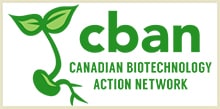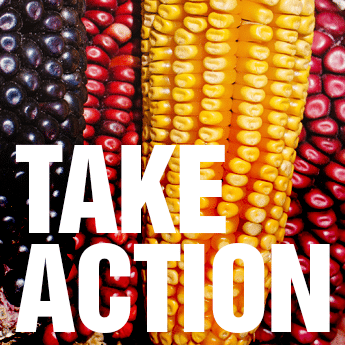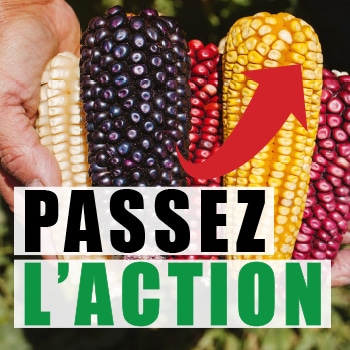Genetically Modified Cotton, CBAN Factsheet
Click here to download and print the pdf file.
February 2013
Genetically engineered (also called genetically modified or GM) cotton is currently grown on 25 million hectares around the world, mostly in India, China, Pakistan and the US.[i] Other countries growing significantly smaller amounts of GM cotton are South Africa, Burkina Faso, Sudan, Brazil, Argentina, Paraguay, Columbia, Mexico, Costa Rica, Burma, Australia, and Egypt.
GM cotton is engineered with one of two traits. One makes it resistant to glyphosate-based herbicides such as Monsanto’s Roundup, while the other stimulates the plant to produce a toxin that kills the bollworm, one of the crop’s primary pests. This pest-resistant cotton is engineered with a gene from the bacteria Bacillus thurengiensis or “Bt”, and is the more commonly grown of the two types.
Bt cotton in India
Cotton is an important cash crop in India. It is grown on 12 million hectares, making India the second largest producer of cotton in the world, behind China. Insect-resistant Bt cotton is the only GM crop currently grown in India.[ii] It was introduced in India by Monsanto in 2002, under the trade name Bollgard, in a joint venture with the Indian seed company Mahyco.
Monsanto promised Indian farmers that Bt cotton would:
- Reduce the amount of pesticides farmers need to buy to control pests,
- Increase harvests and farm income by reducing crop losses due to pest attacks.[iii]
In the first few years after Bt cotton was commercialized in India, some farmers saw reductions in pesticide use and crop losses, but this pattern quickly and dramatically changed.
Summary: GM cotton failed farmers in India
- Bt cotton yields declined
- Secondary pests emerged, forcing increased pesticide use
- The price of cotton seed rose
- Farmers lost the option to buy non-GM cotton seed
Yield declines
Proponents of the technology claim that Bt cotton has greatly increased cotton productivity in India over the past 10 years.[iv] However, 70% of the 73% yield increase reported since Bt cotton was first introduced took place between 2002 and 2005 when less than 5% of the area under cotton production had shifted to growing Bt hybrids. In fact, from 2005 to 2012, when up to 90% of Indian cotton fields were cultivated with Bt cotton, yields have increased only marginally by 2%.[v]
These figures show that overall increases in cotton yields over the past decade cannot be attributed exclusively to Bt cotton, and were almost certainly due to improvements in infrastructure and hybrid seeds.[vi] Hybrid non-GM cotton varieties had already led to a sharp yield increase before the GM Bt trait was introduced.
Some regions have seen particularly drastic failures of Bt cotton. In the southern state of Andhra Pradesh, for example, the government estimates that 70% of the 1.9 million hectares planted with Bt cotton in 2011 had a yield loss of more than 50%.[vii] Maharashtra, another major cotton growing state that cultivates 4.2 million hectares of Bt cotton, has reported the lowest cotton yield of about 5 quintal per hectare since 2006. The latest state estimate says this yield is likely to drop to 3 quintal per hectare.[viii] Failures of Bt cotton crop have been attributed to poor quality seeds, the emergence of secondary pests, bollworm resistance, and the fact that Bt technology, which was developed in the US, is not well adapted to Indian agricultural conditions.[ix]
Impacts on Livestock and Human Health
Farmers across several districts of the cotton growing areas of India have reported that their livestock fell sick or died after grazing on plant debris from cleared Bt cotton fields. A report compiled by research-based groups, veterinary scientists and local farmers’ associations showed that a total of 1820 sheep died in 4 villages in one region, after grazing in Bt cotton fields.[x] No government studies have been conducted on livestock morbidity or mortality in Bt cotton areas.
Farmers and farm workers who pick Bt cotton have also complained of skin and respiratory allergic reactions. Civil society and independent scientists have conducted studies,[xi] but no government studies have been published on this human health question.
Increased Pesticides
Monsanto-Mahyco’s primary promise was that Bt cotton would reduce the amount of chemicals needed to control pests. Over the past 10 years, however, government data show that pesticide usage has stayed the same or increased across the cotton belt.1 This is due to two factors:
- Insects have developed resistance to Bt cotton: The cotton bollworm, Bt’s target pest, developed resistance to the Cry toxin produced by Bt cotton,[xii] pushing farmers to use more pesticides to control the pest. To combat this problem, in 2006, Monsanto released a second generation of Bt cotton called Bollgard-II, which has two Bt genes instead of the original single gene in Bollgard-I.
- Secondary pests are becoming a problem: Because of the initial reduction in bollworm populations in Bt cotton fields, pests that did not previously pose a significant threat to cotton crops, such as mealy bug, aphids and thrips, have become more prevalent.[xiii] Farmers are now using highly toxic pesticides to manage these new pest problems.
Increased Costs
Bt seed, which farmers have to buy from seed companies every year, is anywhere from 3 to 8 times more expensive than conventional hybrid seed, and several times more costly than the local seed farmers could buy in the market two decades ago.[xiv] The seeds can cost anywhere between 700 ($13) to 2,000 rupees ($38) per packet.[xv]
Cotton farmers in India are also spending significantly more on pesticides and other farm inputs. In 2002, farmers spent Rs 5.97-billion on pesticides and in 2010 this number rose to Rs 8.80-billion[xvi] as farmers tried to combat pest resistance and the emergence of secondary pests. Bt cotton also requires higher levels of irrigation and fertilizer to yield well, further pushing up farmers’ costs.
Farmer Suicides
Farmer dependence on costly farm inputs is not new, but began with the introduction of expensive proprietary hybrid seeds and was exacerbated with the introduction of Monsanto’s Bt cotton. The failure of Bt cotton to deliver on its promises to farmers has taken a heavy human toll.
As many farmers shifted away from using their own saved seed, their dependence on the market for seed and other inputs grew. Most small-scale farmers have to borrow money to buy expensive seeds, pesticides and fertilizers each season. Banks are reluctant to lend to small-scale farmers and many are forced to borrow from independent moneylenders who charge high interest rates. When cotton yields decline, crops fail, or the cotton market collapses, farmers are unable to repay their loans and are pushed deeper into a cycle of debt and poverty.
Farmer advocacy groups in India link seed monopolies, high input costs and debt to the number of farmer suicides in India over the past decade, a majority of which have occurred in the cotton belt.[xvii]
In 2008, 16,196 Indian farmers committed suicide, and in 2009, this number rose to 17,368. The number of suicides in the past 15 years totals a staggering quarter of a million.[xviii]
Why are Indian farmers still growing GM cotton?
Almost 90% of all the cotton grown in India is now Monsanto’s Bt cotton (10.6 million hectares in 2011).[xix]
Monsanto’s virtual monopoly over the seed market means that farmers cannot find non-GM seed on the market. The company’s Bt cotton is sold under several brand names because Monsanto has licensing agreements with a number of Indian seed companies. Few farmers have any choice but to buy Monsanto’s Bt cotton.
Just a decade ago, Indian farmers saved 80% of their cotton seed,[xx] and had over 1500 varieties of cotton to choose from.[xxi]
Updates
In a report released in August 2012, the Indian Parliamentary Standing Committee on Agriculture concluded that, “after the euphoria of a few initial years, Bt cotton cultivation has only added to the miseries of the small and marginal farmers”. The committee called for a complete ban on open field trials of GM crops in India, until the country was able to develop a better regulatory and monitoring system.[xxii]
Also in August 2012, the state government of Maharashtra took legal action to ban Mahyco-Monsanto from selling their Bt cotton seed in the state. These charges were filed because the company had allegedly been creating artificial shortages of seed to raise prices on the stock market, and selling substandard seed.[xxiii]
GM Cotton in the United States
In 2011, an estimated 75% of cotton in the U.S. was insect resistant (Bt) and 96% was herbicide tolerant (companies “stack” the two traits together in the one plant).[xxiv]
In the U.S., the introduction of Bt cotton is calculated to have displaced 15-million kgs (34-million lbs) of insecticide.[xxv] However, this does not include a quantification of the Bt toxin produced by the plant itself. Furthermore, a number of key target insects are beginning to show resistance to Bt.
The most recent data from the U.S. Department of Agriculture shows that herbicide use on cotton has risen from 2.1 kilograms a hectare in 1996, to 3.0 kilograms a hectare in 2010.[xxvi] The development of glyphosate tolerant weeds in U.S. cotton areas is further pushing up the use of pesticides, as well as forcing many mechanized farms to resort to pulling weeds by hand.[xxvii]
The first populations of glyphosate resistant Palmer amaranth (pigweed) were confirmed in 2005 and are now an economic threat to U.S cotton production.
GM Cotton Failure in Colombia:
Colombia also started growing Bt cotton in 2002. In 2009, the Columbian Agricultural Institute fined Monsanto for the poor performance of its GM cotton in the 2008/2009 season.
Further Resources
- Coalition for a GM Free India (CGMFI), 2012. 10 Years of Bt Cotton: False Hype and Failed Promises, Cotton farmers’ crisis continues with crop failure and suicides. Available at: http://indiagminfo.org/wp-content/uploads/2012/03/Bt-Cotton-False-Hype-and-Failed-Promises-Final.pdf
- Navdanya, Navdanya International, the International Commission on the Future of Food and Agriculture, with the Centre for Food Safety. 2011. The GMO emperor has no clothes: A Global Citizens’ Report on the State of GMOs- False Promises, Failed Technologies. www.navdanya.org/attachments/Latest_Publications5.pdf
- Standing Committee on Agriculture, 2012. Cultivation of Genetically Modified Food Crops – Prospects and Effects. New Delhi, India: Ministry of Agriculture. Fifteenth Lok Sabha. Thirty Seventh Report. Available at: 164.100.47.134/lsscommittee/Agriculture/GM_Report.pdf
- Michael X. Peled, 2012. Bitter Seeds (documentary). Teddy Bear Films.
- Sakkhari, Kiran and A Qayum. What farmers reaped growing Bt cotton – Profit or Problem? South Against Genetic Engineering and Deccan Development Society. http://www.ddsindia.com/www/PDF/Bt%20Cotton%20Five%20Years%20Study%20Report.pdf
- Fieldquestions: Food, Farming and Biotechnology (blog), by Glenn Stone. http://fieldquestions.com
Websites of some organizations working on GM issues in India:
- Centre for Sustainable Agriculture: www.csa-india.org
- Coalition for a GM Free India: www.indiagminfo.org
- Gene Campaign: www.genecampaign.org
- Navdanya: www.navdanya.org
- South Against Genetic Engineering: www.sagemysore.wordpress.com and Deccan Development Society: www.ddsindia.com
[i] James, C., 2012. Global Status of Commercialized Biotech/GM Crops: 2011. International Service for the Acquisition of Agri-biotech Application (ISAAA).
[ii] In 2006, Monsanto, along with its Indian subsidiary company Mahyco, put forward a request for approval for Bt Brinjal (eggplant). However, in 2010, after a series of national public consultations and nationwide protests, the Ministry of Environment in India placed an indefinite moratorium on the crop.
[iii] In 2012, the Advertising Standards Council of India asked Monsanto to drop its claim that GM cotton technology had boosted the income of Indian cotton farmers by over Rs.31,500 crore (approximately US $5,800-million). These figures had been published in newspaper ads in August 2011. See for instance: Sharma, Dinesh. 2012. Baseless genetically modified cotton ads earn Monsanto flak, India Today (January 14).
[iv] Choudhary, B. and Gaur, K., 2010. Bt cotton in India: A country profile. International Service for the Acquisition of Agri-biotech Applications (ISAAA).
[v] Stone, G.D., 2012. Bt Cotton, Remarkable Success, and Four Ugly Facts. Field Questions. Available at: http://fieldquestions.com/2012/02/12/bt-cotton-remarkable-success-and-four-ugly-facts/
[vi] Kranthi, K., 2011. 10 years of Bt in India. Central Institute for Cotton Research. Available at: http://www.cotton247.com/article/27520/part-ii-10-years-of-bt-in-india
[vii] Coalition for a GM Free India (CGMFI), 2012. 10 Years of Bt Cotton: False Hype and Failed Promises, Cotton farmers’ crisis continues with crop failure and suicides. Available at: http://indiagminfo.org/wp-content/uploads/2012/03/Bt-Cotton-False-Hype-and-Failed-Promises-Final.pdf
[viii] Pawar, Yogesh, 2012. Bt failure to hit cotton yield by 40%: Govt. DNA (Nov 26). Available at: http://www.dnaindia.com/mumbai/report_bt-failure-to-hit-cotton-yield-by-40pct-govt_1769428
[ix] Gene Campaign, A distaster called Bt cotton. Available at: http://www.genecampaign.org/Publication/Article/BT%20Cotton/A-disaster-called-btcotton.htm
[x] Ramdas, S.K., 2010. Bt cotton and livestock: health impacts, biosafety concerns and the Legitimacy of Public Scientific Research Institutions. In: Paper presented at the National workshop on Genetically modified Crops/Foods and Heath Impacts. pp.1–15.
[xi] Gupta, Ashish et al. 2006. Impact of Bt cotton of famrer’s health (In Bharwani and Dhar district of Madhya Pradesh. http://www.biosafety-info.net/article.php?aid=352.
[xii] Monsanto, 2010. Cotton In India. Available at: http://www.monsanto.com/newsviews/Pages/india-pink-bollworm.aspx.
and; Sharma, D., 2010a. Bt cotton has failed admits Monsanto. India Today. 6 Mar.
[xiii] Ghoswami, B., 2007. Bt cotton devastated by secondary pests. InfoChange News. Available at: http://www.dottal.org/DIE DIE/bt_cotton_devastated_by_secondary_pests.htm
and; Subramani, M., 2011. Pests continue to bug Bt cotton growers. The Hindu Business Line. 9 Nov.
[xiv] Sainath, P. 2009. The largest wave of suicides in history. Counter currents. Available at: http://www.counterpunch.org/2009/02/12/the-largest-wave-of-suicides-in-history
[xv] Nemana, Vivekananda. 2012. In India, GM crops come at a high price. India Ink, New York Times (October 16). Available at: http://india.blogs.nytimes.com/2012/10/16/in-india-gm-crops-come-at-a-high-price
[xvi] Jishnu, Latha. 2011. Cotton Saga Unravels. Down to Earth. Available at: http://www.downtoearth.org.in/content/cotton-saga-unravels
[xvii] Navdanya, Navdanya International, the International Commission on the Future of Food and Agriculture, with the Centre for Food Safety. 2011. The GMO emperor has no clothes: A Global Citizens’ Report on the State of GMOs- False Promises, Failed Technologies. Available at: www.navdanya.org/attachments/Latest_Publications5.pdf
[xviii] Sainath, P., 2011. In 16 years, farm suicides cross a quarter million. The Hindu. 29 Oct.
[xix] James, C., 2012. Global Status of Commercialized Biotech/GM Crops: 2011. International Service for the Acquisition of Agri-biotech Application (ISAAA).
[xx] Gaur PM, et al, 2010. Chickpea Seed Production Manual. International Crops Research Institute for the Semi-Arid Tropics.
[xxi] Shiva, Vandana. 2011. Seedy Deals. The Navdanya Diary.http://www.navdanya.org/blog/?p=540
[xxii] Standing Committee on Agriculture, 2012. Cultivation of Genetically Modified Food Crops – Prospects and Effects. New Delhi, India: Ministry of Agriculture. Fifteenth Lok Sabha. Thirty Seventh Report. 164.100.47.134/lsscommittee/Agriculture/GM_Report.pdf
[xxiii] Deccan Herald, 2012. Maharashtra bans Mahyco from selling Bt cotton seeds. Deccan Herald. 9 August.
[xxiv] Benbrook, Charles M., 2012 Impacts of genetically engineered crops on pesticide use in the U.S. – the first sixteen years, Environmental Sciences Europe, 24:24.
[xxv] Ibid.
[xxvi] Ibid.
[xxvii] Neuman ,W. and Pollack, A. 2010. US farmers cope with Roundup-resistant weeds. New York Times (May 3).






